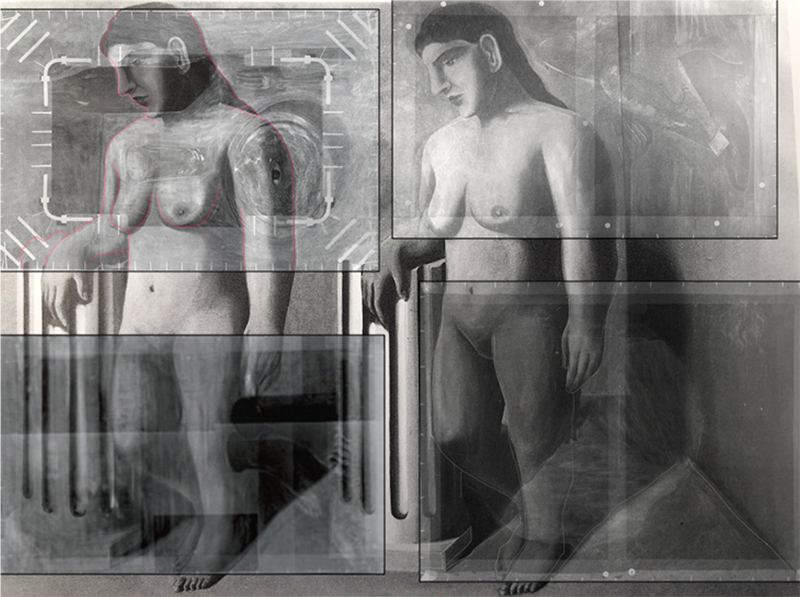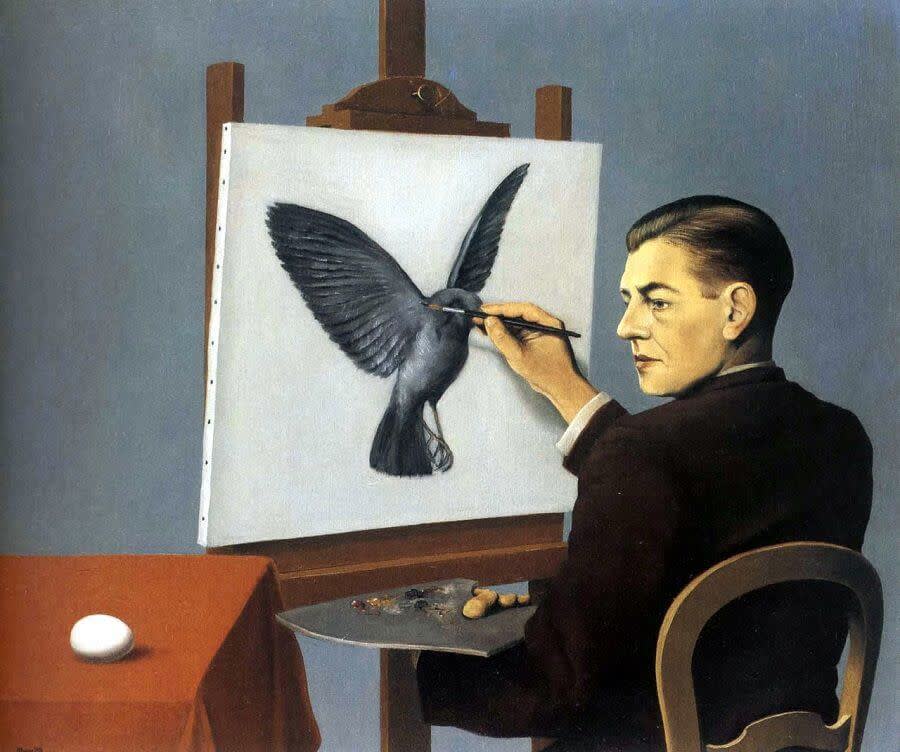
René Magritte
La Clairvoyance, 1936
What would the art world be without a little mystery and intrigue? When a painting goes missing, it’s often the work of art thieves executing a well-orchestrated theft, and as history can attest, no museum or work is off-limits in the eyes of determined robbers.
Take Leonardo da Vinci’s Mona Lisa, which has been hijacked from the Louvre on multiple occasions; the last instance of which occurred in August 1911 when robbers stole the painting off the museum’s walls. It took over two years for authorities to track down the iconic renaissance portrait, which has remained under careful surveillance ever since. But what happens when a work is never found, or reemerges almost a century later? Such was the case with René Magritte’s 1927 painting ‘The Enchanted Pose,’ when portions of the vanished artwork were discovered by a group of conservators in 2013.
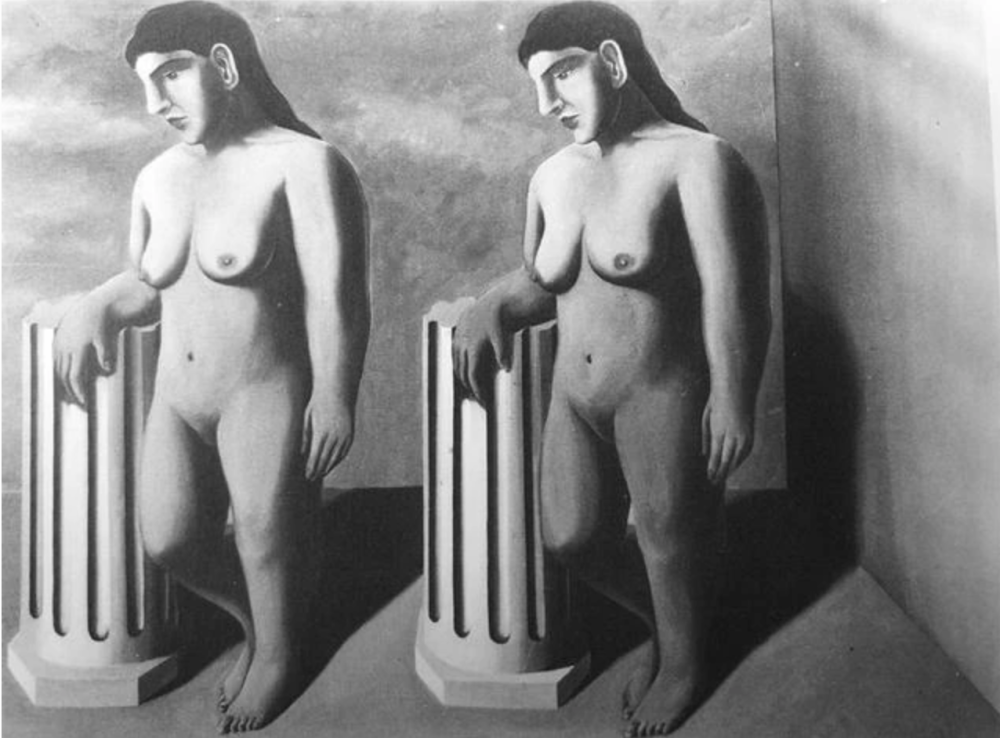
René Magritte
The Enchanted Pose (without restored colors), 1927
Completed in the early days of Magritte’s surrealist period, The Enchanted Pose is an enigmatic work featuring two nude women leaning on broken columns. While the large-scale figurative painting hadn’t been seen since the early 1930s, art historians knew of its existence from a grainy black and white photo in the Belgian artist’s Catalogue Raisonné, as well as other historical resources, such as a 1927 review of a show at the Galerie L’Epoque in Brussels where it first appeared. The last known reference to the work was found in a 1932 letter asking Magritte to retrieve the painting from the Palais des Beaux-Arts in Brussels, indicating that it had not been selected for a group exhibition there, after which no literature on or mention of The Enchanted Pose was made since.
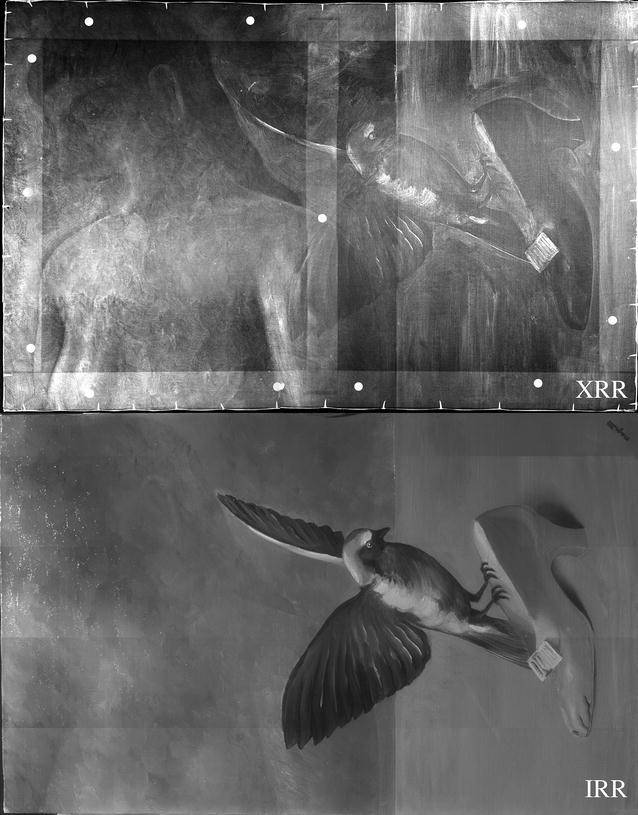
René Magritte
The Enchanted Pose, X-Ray
Assumed lost since 1932, in reality the painting had been hiding in plain sight for over 80 years. Rediscovered in 2013 by conservators at New York’s Museum of Modern Art who took X-rays of Magritte’s 1935 painting ‘The Portrait (Le Portrait)' in attempt to discover more about the artist’s painting materials and techniques, what they stumbled across instead, hidden beneath layers of oil paint, was the top left corner of the lost 1932 canvas.
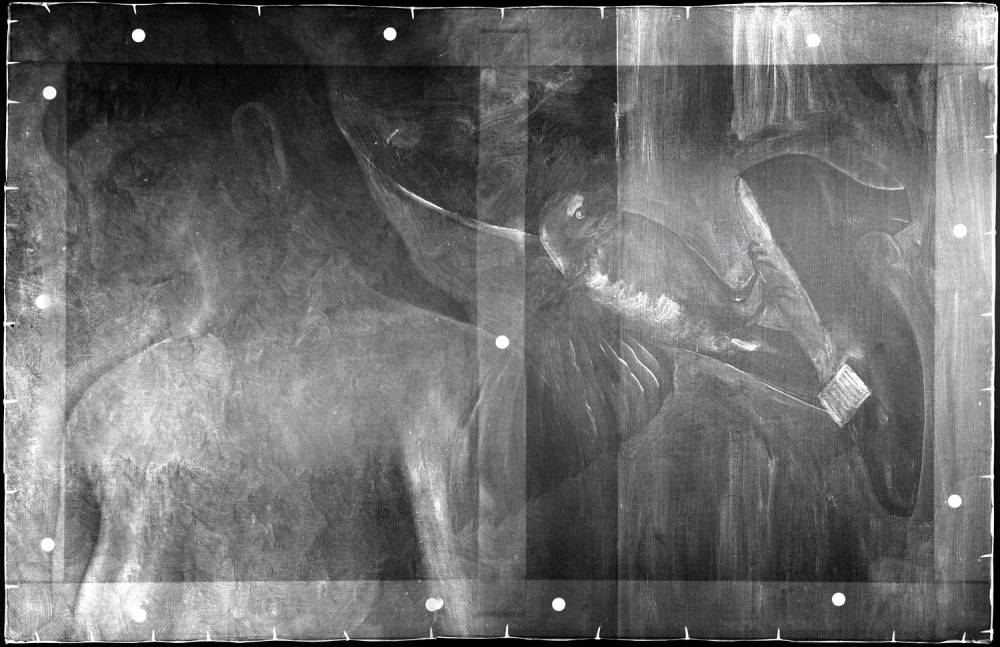
René Magritte
The Enchanted Pose, X-Ray
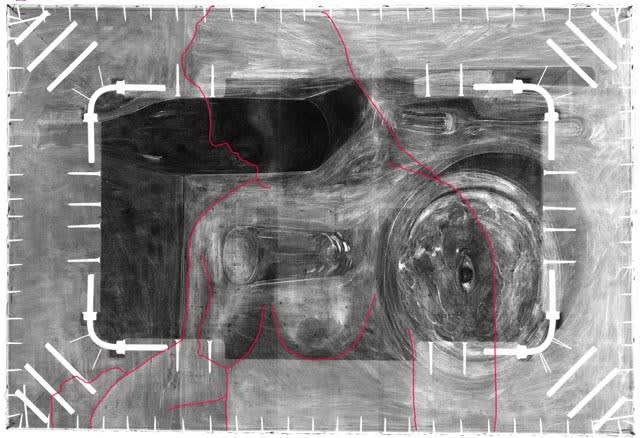
René Magritte
The Enchanted Pose, X-Ray

René Magritte
The Enchanted Pose, X-Ray
An art world discovery akin to paleontologists unearthing a mysterious dinosaur fossil, art historians and conservation scientists around the world quickly set about on a hunt to find the other missing pieces of Magritte’s hidden puzzle. By 2017, all three remaining quadrants had been discovered, hidden underneath similar-sized paintings dated from 1935, residing in collections around the world. Stockholm’s Moderna Museet found the lower left corner under a painting titled ‘The Red Pose (Le modèle rouge),’ while the lower right corner was discovered beneath ‘The Human Condition (La condition humaine),’ and the final quadrant was located by researchers through radiographic examination of the painting ‘God is not a Saint (Dieu n’est pas un saint)’ in 2017.
René Magritte
The Portrait, Brussels, 1935
René Magritte
The Red Pose, 1934
René Magritte
La condition humaine, 1935
René Magritte
God is not a Saint, 1935–36
While the exact reason behind Magritte’s dismembering of his 1927 work will forever remain a mystery, he was most likely short on materials and had limited funds to buy new canvases, though some scholars have speculated that the added pressure to produce work for an upcoming solo exhibition in 1936 coupled with an overall dissatisfaction with The Enchanted Pose’ made him commit the artistic atrocity. Although the painting will never be seen physically in its totality again, thanks to modern technology, a digitally completed rendering of the puzzle can be seen at the Magritte Museum in Brussels, not far from the gallery where it was first exhibited in 1927.
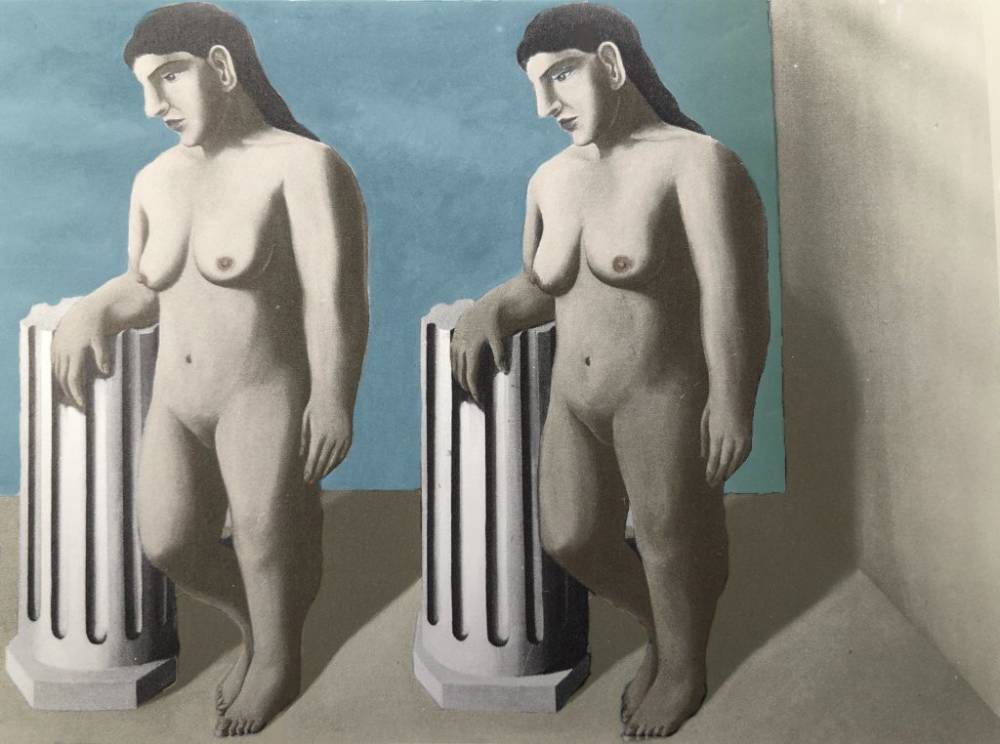
René Magritte
The Enchanted Pose (with restored colors), 1927
